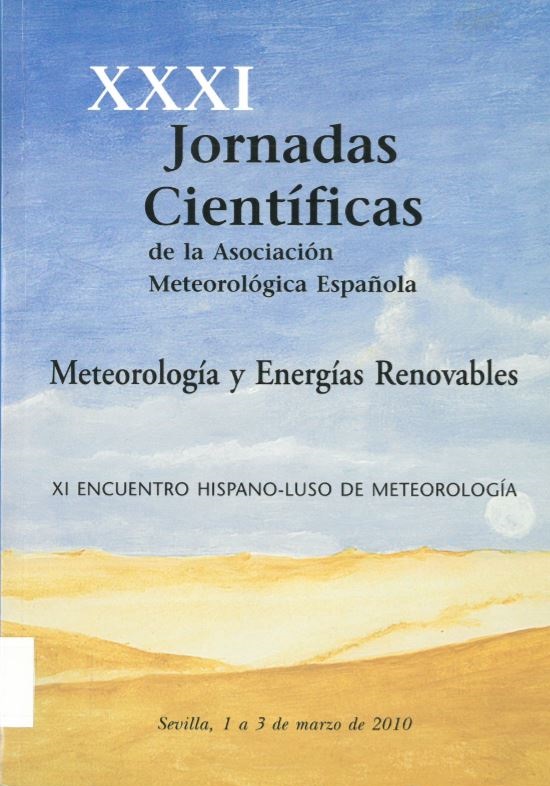ARCTIC OZONE EVOLUTION AROUND THE STRATOSPHERIC FINAL WARMING
Resumen
The stratospheric dynamic is determined by a strong temperature gradient established between the pole and equator during the solstices, due to the different latitudinal solar warming which exists between these regions. This thermal gradient generates a zonal wind profile from west in the winter hemisphere and from east in the summer hemisphere. The westerlies are more intense so they originate a zonal wind belt at high latitudes in winter which isolates the inside air to the rest of the atmosphere. This cyclonic system is called Stratospheric Polar Vortex, and although it is maintained during the whole winter, it is also sensitive to be affected by the vertical wave propagation from the troposphere.Apart from the dynamic effects, chemicals processes take place in the stratosphere also; among them, ozone production and destruction stand out. The stratospheric ozone production is a natural process that occurs basically in the equator and involves ultraviolet sunlight and oxygen molecules. Meanwhile the destruction is located fundamentally in poles and promoted by reactive gases that contain bromine and chlorine, such as chlorofluorocarbons (CFCs). To make the ozone destruction possible the molecules of these reactive halogen gases must be actived by the ultraviolet sunlight and chemical reactions with other molecules, like those contained in the Stratospheric Polar Clouds (SPC) (Fahey 2007).
Citas
Andrews, D. G.; Holton, J. R.; Leovy, C. B. (1987): “Middle Atmosphere Dynamics”, Academic Press, 483 pp. Ayarzagüena, B.; Serrano, E. (2009): “Monthly characterization of the stratospheric circulation over the Euro-Atlantic area in relation with the timing of stratospheric final warmings.” J. Climate, 24, 63126324. Baldwin, M. P.; Holton, J.R. (1987): “Climatology of the Stratospheric polar Vortex and Planetary wave Breaking.” J. Atmos. Sci., 45, 11231142. Black, R. X.; McDaniel, B. A.; Robinson, W. A. (2006): “Stratosphere-troposphere coupling during spring onset”. J.Climate, 19, 4891-4901. Fahey, D.W. (2007): “Twenty Questions and Answers about the Ozone Layer: 2006 update”. Scientific Assessment of Ozone Depletion 2006, 50 pp.http://ozone.unep.org/Assessment_Panels/SAP/S cientific_Assessment_2006/

